Nepal Luxury Tour
Nepal Luxury Tour is an opportunity of a lifetime in the form of an amazing tour package. Witness the beauty and excellence of this mountainous country with luxury travel in Nepal.
Tour around Kathmandu and the medieval city of Bhaktapur with our guides and experts. A walk around Bhaktapur will give you an insight into the centuries-old history, art, culture, and tradition of Nepal.
Dig into the rurality of life that exists in the Kathmandu Valley. See with your own eyes when the rays of the sun touch the green lush valleys from Nagarkot view tower.
Furthermore, witness all-encompassing Himalayan dawn and unwind in the subtropical atmosphere of laid back Pokhara in this amazing Nepal Luxury Tour.
The peaceful lakeside of Pokhara awaits you for a delightful dinner with a relaxing ambiance. You will also be offered an option to fly to Poon Hill on a private helicopter. You will surely get a close-range view of high mountain peaks as Poon Hill is the viewpoint for majestic Annapurna ranges.
Nepal Luxury Tour: Experience the Finest of Holidays in Nepal
Nepal is a country full of mountains, ancient cultures, and amazing natural beauty. It provides a very different mix of adventure and relaxation. For travelers looking for more than just a regular visit, the Nepal Luxury Tour provides visitors with a first-class journey. This very journey reveals the country’s rich cultural heritage, beautiful landscapes, and exceptional experiences. This crafted luxury tour package provides the perfect balance of comfort, exclusivity, and exploration.
Best Time to Visit Nepal for a Luxury Tour
The best time to enjoy a Nepal Luxury Tour is during the spring time which starts from the month of March to May and the other time is in the autumn which is generally from September to November.
- Spring (March to May): The weather is pleasant. You will get to see blooming rhododendrons in the hills. This season provides best conditions for flights and exploring Kathmandu’s historical sites.
- Autumn (September to November): Autumn time is well known for its clear skies and mild temperatures. Autumn is perfect for viewing the Himalayan peaks, especially during flights to Mount Everest or Poon Hill. The festive atmosphere also allows visitors to witness major Nepali festivals like Dashain and Tihar.
Avoid the monsoon season which starts from June to August. As it brings in heavy rains, which may cause disruptions to flights and outdoor activities.
Accommodation for Your Nepal Luxury Tour
Throughout the Nepal Luxury Tour, your accommodation will be very carefully selected.
- 4- and 5-Star Hotels: In Kathmandu you will stay at a premium hotels that shall provide modern amenities, such as spas, gyms, and fine dining. These hotels will have contemporary luxury with traditional Nepalese architecture.
- Resorts in Pokhara: The lakeside resorts in Pokhara will provide our visitors with amazing views along with utmost comfort.
- Mountain Lodges and Retreats: You will stay at luxury place at Nagarkot too. It will provide great views of the Himalayas.
Best Places to Visit During the Nepal Luxury Tour
Mount Everest Scenic Flight: This is a must-do experience for luxury travelers. Take a scenic flight from Kathmandu and marvel at the world’s highest peak, Mount Everest, along with several other mountains.
Kathmandu Valley: Kathmandu puts forward with a lot of UNESCO World Heritage Sites to visit. Explore Patan Durbar Square, Boudhanath Stupa, and Swayambhunath (Monkey Temple). Each location is unique and provides a different experience.
Bhaktapur: This ancient city feels like a living museum. It is a city with well-preserved architecture. Walk through Bhaktapur Durbar Square, Nyatapola Temple and the 55-Window Palace. The city is famous for its artisans and traditional craftsmanship.
Nagarkot: Nagarkot is a very peaceful escape. It is known for its great views of the Himalayas. Nagarkot is one of the best places to catch the sunrise or sunset over the mountains, including Mount Everest on a clear day.
Pokhara: This city is a favorite destination for relaxation. Pokhara holds the beauty of nature with luxurious accommodations. Visit Phewa Lake, explore the International Mountain Museum, or take a boat ride while enjoying the majestic views of Machapuchare and the Annapurna range.
Poon Hill: This amazing viewpoint which is accessible by helicopter provides one of the most beautiful panoramic views of the Annapurna and Dhaulagiri ranges. A morning flight to Poon Hill provides a once-in-a-lifetime opportunity to see the Himalayas up close without hiking.
The Perfect Blend of Adventure and Relaxation
Our Nepal Luxury Tour provides a holiday with lavish accommodations and amazing flights. It gives our travelers with the perfect balance between adventure and relaxation. You will get to go on from hiking through subtropical forests and visiting remote mountain villages to enjoying a spa day at a luxury resort. Nepal Luxury Tour is going to give you all the lavish feels.
Why Choose Himalayan Trekking for Your Nepal Luxury Tour?
With over two decades of experience in curating high-end travel experiences, Himalayan Trekking and Tours is dedicated to providing you with a truly amazing journey. Our team of experts is committed to making sure of your comfort, safety, and enjoyment throughout the tour. We prioritize personalized service, and our knowledge of the place helps us to help create the best itineraries for our visitors. It will surely reflect the best of Nepal.
Your Nepal Luxury Tour is an opportunity to discover the best of Nepal while indulging in world-class luxury. We believe that luxury travel should also provide a very meaningful cultural experiences, and our tour package is designed to give you both. From luxurious accommodations to once-in-a-lifetime experiences, we strive to exceed your expectations at every turn.
Start Your Nepal Luxury Journey Today
The ultimate Nepal experience awaits you with Himalayan Trekking and Tours. Whether you are drawn by the mountains, the rich cultural heritage, or the promise of adventure, our Nepal Luxury Tour has it all. Begin planning your dream trip today, and let us take care of all the details to make sure that your journey through Nepal is nothing short of exceptional.
Overview of Nepal Tibet Bhutan Tour
Explore the Himalayas with our 17-day Nepal-Tibet-Bhutan tour! Starting in Kathmandu, Nepal, you will visit ancient temples and bustling bazaars in the Kathmandu Valley. Then, we’ll head to Nagarkot and Bhaktapur to learn about Nepal’s rich history. Next, we will explore Chitwan National Park‘s lush jungles before venturing into Tibet. In Lhasa, you will see the Potala Palace, Jokhang Temple, and Barkor Street, immersing yourself in Tibetan culture. Then, we will visit Namtso Lake to experience the spiritual beauty of the Tibetan plateau.
After Tibet, we’ll journey to Bhutan, known for its stunning landscapes and preserved culture. From Thimphu to Punakha Dzong, you’ll continue your cultural understanding. The highlight of the trip is a trek to the Tiger’s Nest Monastery in Paro, offering breathtaking views and spiritual tranquility. Finally, we’ll return to Kathmandu, concluding a journey filled with cultural enlightenment, natural wonders, and adventurous experiences in the majestic Himalayas.
Nepal Tibet Bhutan Tour is the ultimate tour that allows travelers to travel in the three different Himalayan countries of south Asia. Incorporating all the important highlights, this trip allows you to gain firsthand experience of the riches that these three countries have in abundance!
Discover the Rich Heritage on Nepal Tibet-Bhutan Tour: A Journey Through Culture and Tradition
Begin Nepal Tibet Bhutan Tour through the ancient cities of Kathmandu, Lhasa, Thimphu, and Paro, and discover the rich traditions and histories of the Himalayan region.
Kathmandu: A Living Heritage
Nepal Tibet Bhutan package In Kathmandu, the capital of Nepal, explore the bustling alleyways around Kathmandu Durbar Square, where you’ll find beautifully carved palaces and pagodas that tell stories of the past. Experience the spiritual atmosphere of Swayambhunath Stupa, known as the Monkey Temple, and see devoted pilgrims circling Boudhanath Stupa, an ancient symbol of Tibetan Buddhism.
Lhasa: The Spiritual Essence
Nepal Tibet Bhutan package in Lhasa, the spiritual capital of Tibet, immerse yourself in the sacred surroundings of the Potala Palace. Visit the Jokhang Temple, a central place for Tibetan Buddhists, and walk through the lively Barkor Street, where you can feel the essence of Tibetan culture.
Thimphu: Bhutanese Elegance
Nepal Tibet Bhutan package at Thimphu, the capital of Bhutan, offers a mix of modernity and Bhutanese tradition. See the ornate Tashichho Dzong, a stunning building that serves as both a fortress and a monastery. The National Memorial Chorten stands as a symbol of Bhutanese spirituality, and the bustling markets provide a glimpse into local daily life.
Paro: Serenity Amidst the Mountains
Nepal Tibet Bhutan package at Paro, a serene valley steeped in history, explore the ancient Rinpung Dzong, perched on a hilltop, and wander through Paro’s vibrant market streets. The highlight of the journey is the iconic Tiger’s Nest Monastery, where Bhutanese spirituality and stunning landscapes come together in a breathtaking ascent.
This Nepal Tibet Bhutan Tour promises a deep understanding of the diverse traditions that define the Himalayan region. It leaves a lasting impression of cultural richness on those fortunate enough to experience this enchanting journey.
Natural Marvels: Nepal Tibet Bhutan Tour
The Nepal-Tibet-Bhutan tour is a magical journey through some of the most beautiful places on Earth. It starts in Nepal, where you’ll see the stunning Kathmandu Valley with its green hills and the towering Himalayas in the background. Then, you’ll explore the amazing Chitwan National Park, with its diverse plants and animals.
Next, the tour takes you to the Tibetan plateau, where you’ll visit the peaceful Namtso Lake, surrounded by snow-covered mountains. This is a serene contrast to the bustling city of Lhasa.
In Bhutan, the tour continues through the stunning Paro Valley, nestled between tall mountains and with a beautiful river running through it. The highlight of the trip is a trek to the Tiger’s Nest Monastery, perched on a cliff in a pristine alpine setting.
Overall, this journey celebrates the diverse and breathtaking landscapes of the Himalayan region, leaving a lasting impression on everyone lucky enough to experience it.
Adventure and Exploration: Nepal Tibet Bhutan Tour
Exploring the Nepal Tibet Bhutan journey is an exciting mix of adventure and discovery. Each place you visit offers unique landscapes and thrilling activities for you to experience.
Chitwan National Park:
Chitwan National Park in Nepal is a paradise for wildlife lovers and adventure seekers. Spend a whole day exploring the lush jungle, where you might spot Bengal tigers, one-horned rhinoceros, and colorful birds on a safari. You can also take a canoe ride along the river or go on an elephant safari for an even more exciting adventure.
Namtso Lake and the Tibetan Plateau:
As the journey takes you to the Tibetan plateau, Namtso Lake awaits. This high-altitude lake, surrounded by snowy peaks, is a stunning sight to behold. The drive to the lake is an adventure in itself, with dramatic landscapes and a chance to meet Tibetan nomads along the way. At Namtso, you can hike along the shore or simply take in the peaceful surroundings, creating unforgettable memories in this unique environment.
Each Nepal Tibet Bhutan destination offers a blend of wildlife encounters and breathtaking landscapes, creating an unforgettable adventure for those seeking something extraordinary.
Spiritual and Historical Journey:
Enjoying a spiritual and historical journey is a profound exploration of the sacred landscapes within the Himalayan region, the best trekking agency in Nepal. The pilgrimage begins in Lhasa, where the majestic Potala Palace stands as a testament to Tibet’s rich cultural heritage and spiritual significance. The palace is located on the Red Hill and was once the winter residence of the Dalai Lama. Visitors can experience the ancient rituals and revered traditions that are still practiced today.
Continuing the journey, the next stop is the Jokhang Temple, which is located on the bustling Barkor Street. This sacred site radiates a palpable energy, drawing pilgrims and travelers alike. The temple is adorned with intricate murals and revered artifacts, offering a glimpse into the spiritual tapestry woven over centuries in the Himalayan region.
The pilgrimage then extends to Bhutan, where the ascent to the Tiger’s Nest Monastery in Paro marks the pinnacle of spiritual connection. The monastery is dramatically perched on a cliffside, embodying Bhutanese spirituality and inspiring visitors with its breathtaking location and the legend of Guru Rinpoche’s meditative retreat.
As the Nepal Tibet Bhutan Tour unfolds, a profound connection to the spiritual essence of the Himalayan region is forged, transcending time and inviting contemplation amidst these revered landmarks. This journey is an opportunity to experience the rich spiritual history of the Himalayan region and connect with its profound energy.
Meals on Nepal Tibet Bhutan Tour
Indulge in a culinary journey in your Nepal Tibet Bhutan Tour which unfolds across the Himalayas as our tour promises a delightful array of dining experiences. Throughout the trip, a diverse selection of cuisines awaits, with popular options encompassing Indian, Chinese, Nepalese, Bhutanese, Tibetan, and the ever-familiar continental fare.
Whether you savor the rich flavors of Indian spices, indulge in the subtleties of Bhutanese dishes, or explore the culinary traditions of Tibet, each meal is an opportunity to embrace the region’s cultural diversity.
In Nepal and Bhutan, our inclusive package ensures a hassle-free experience with three daily meals—breakfast, lunch, and dinner—served at the hotels. The culinary adventure continues with an extensive menu featuring both vegetarian and non-vegetarian options. However, in Tibet, breakfast will be provided as part of the package, allowing for flexibility during lunch and dinner.
This provides a unique opportunity to explore local eateries, sample authentic Tibetan cuisine, and immerse yourself in the gastronomic tapestry of the Himalayan plateau.
The best time to enjoy a Nepal-Tibetan-Bhutan Tour
The best time to enjoy a Nepal Tibet Bhutan tour depends on various factors, including the weather, festivals, and the type of experiences you seek in each region. Here’s a general guide for optimal timing:
1. Nepal:
- Spring (March to May): This is an ideal time with pleasant weather, blooming flowers, and clear skies. It’s perfect for trekking and exploring cultural sites.
- Autumn (September to November): Another excellent time, characterized by mild temperatures, clear views of the Himalayas, and vibrant landscapes.
2. Tibet:
- Late Spring to Early Autumn (May to October): Tibet experiences a milder climate during these months, making it suitable for travel on Nepal Tibet Bhutan Tour. The high-altitude locations are more accessible, and the weather is generally clearer.
3. Bhutan:
- Autumn (September to November): Bhutan’s autumn offers clear skies, pleasant temperatures, and the beauty of the changing foliage. It’s an excellent time for trekking and cultural exploration.
- Spring (March to May): Similar to Nepal, spring is also a good time with blooming flowers and comfortable temperatures.
Considerations:
- Festivals: Check the festival calendar, as attending local festivals can enhance your cultural experience. Festivals often draw vibrant celebrations, colorful rituals, and traditional performances.
- Avoid Monsoon (June to August): Monsoon season brings heavy rain to Nepal and parts of Bhutan, affecting travel conditions. In Tibet, rain is less of a concern, but the high-altitude locations may still be challenging.
Overall, the months of April to June and September to November are generally considered the best times for a Nepal-Tibet-Bhutan tour. However, specific preferences, such as a desire for trekking or cultural events, can influence the optimal timing for your journey. Additionally, it’s essential to check the latest travel conditions and entry requirements, especially considering any potential changes in regional policies.
Travel documents for a Nepal Tibet Bhutan tour
A Nepal-Tibet-Bhutan tour involves traveling through multiple countries, each with its own set of entry requirements and travel documents. Here’s a general overview, but it’s crucial to check with the respective embassies and authorities for the latest and most accurate information:
1. Nepal:
- Tourist Visa: Most travelers can obtain a tourist visa upon arrival at Tribhuvan International Airport in Kathmandu or at land border crossings. The visa is typically valid for 15, 30, or 90 days.
2. Tibet (China):
- Chinese Visa: Travelers to Tibet need to obtain a Chinese visa before entering Tibet. This usually involves applying at a Chinese embassy or consulate in your home country. We at Himalayan Trekking and Tours will handle the visa process for you too.
- Tibet Travel Permit: In addition to the Chinese visa, a Tibet Travel Permit is required to enter Tibet. This permit is typically arranged by us and is one of the main permits to travel to Tibet.
3. Bhutan:
- Bhutan Tourist Visa: Bhutan has a unique system where tourists can only visit by booking a tour through a licensed tour operator. Do not worry; we at Himalayan Trekking and Tours, the best trekking company in Nepal, will handle the visa process for you.
Additional Tips:
- Nepal-Tibet Border Crossing: If you are traveling overland from Nepal to Tibet, you will also need an additional permit called the Tibet Travel Permit, which is arranged by us.
- Timing: Ensure that the validity of your travel documents, especially passports and visas, extends beyond the duration of your entire trip.
- Travel Insurance: It’s advisable to have comprehensive travel insurance that covers medical emergencies, trip cancellations, and other unforeseen circumstances.
Kailash Mansarovar Yatra is an experience that explores a sacred, barren land blessed with stunning surroundings. It is one of a kind, not only soothing the soul but also having a nice social touch and, of course, a lot of adventure.
Kailash Mansarovar is a historical place and a pilgrimage centre for Hindus, Buddhists, Jains and Bon, a lost religion of Tibet. Those who come here come to perform Parikrama of this holy Kailash Parbat for Darshan, blessings, or penance for their sins.
The Kailash Yatra 2026 is aimed at pilgrims from around the world and Nepal. Most people use the road to other religious places such as Chota Kailash and Adi Kailash.
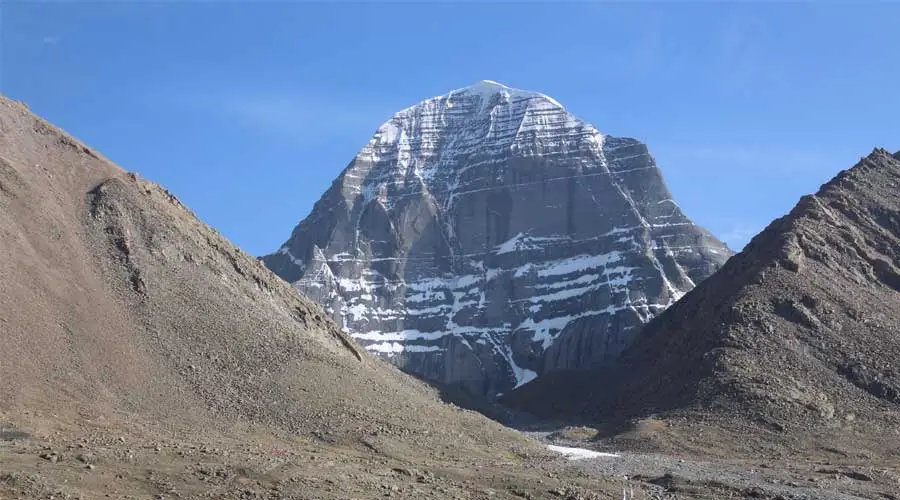
The Pilgrimage Kailash Yatra 2026 from Nepal is steeped in story, myth, and centuries of belief. It is not merely a journey but a journey of ages that helps people find the divine and themselves.
By trekking with Himalayan Trekking and Tours, visiting Mount Kailash and Lake Mansarovar is a secure experience; one does not encounter any trouble and can complete the trip without issue.
We are a very experienced travel and trekking agency in Nepal, and we have been organizing Kailash Mansarovar Yatras for more than 20 years.
Our Kailash Mansarovar Yatra tours come in different packages and will fit in idea of wander style. If you want to take an overland trip through Nepalgunj and Hilsa or use a more comfortable flight with Lhasa, you have all the need in our well-planned itinerary.
The combination of our well-trained guides, our good cars, and our dependable customer care people will see to it that your pilgrimage will proceed well without hitches, even in the inaccessible parts of the Himalayas.
Himalayan Trekking and Tours believe that this is not the trip, but the trail of self-realization, and devotion. We are going to do it by assisting you in making your spiritual journey truly significant by offering secure travelling preparations, individual interest and sincerity in direction.
Let Himalayan Trekking and Tours be your sole partner in achieving your spiritual dream of life being true.
Geographical Location of Kailash Mansarovar Yatra
Kailash Mansarovar is one of the most beautiful and sacred places for Hindus located in the south western region of the Tibet Area. Mount Kailash, towering at 6,638 meters or 21,778 feet, is felt to be the main attraction of this place.
Specifically, the geographical coordinates of Kailash Mansarovar are 31° 06’ 75” North latitude and 81° 31’ 19” East longitude and it remained a beautiful geographical reality in the middle of the severe geographic version of the Tibetan Plateau.
Adjoining the holy Mt.Kailash is the serene Lake Mansarovar, perhaps one of the world’s highest freshwater lakes. Generally, the lake’s elevation is about 4,590 meters (15,060 feet) of the area, with an area of approximately 320 square kilometres.
Its blue waters mirror the white snow on the mountains nearby, so seeing such a place can truly have a spiritual effect on a person. The environment will give the pilgrims the feeling that they have landed in some world they have been dreaming of in the presence of such an attractive nature.
Kailash Mansarovar is accessed by travelling across the vast Tibetan Plateau region, which is noted for its high altitude and extreme weather.
Complex journeys undertaken by pilgrims, starting from the town of Darchen onward, navigating rugged trails, and facing challenges in high-altitude trekking, among other things.
Please Note: Kailash Mansarovar Yatra is opened for Indian Citizens as well from 2025.
Spiritual Significance of Kailash Mansarovar
In Hinduism, Mount Kailash is believed to be the residence of Lord Shiva. Shiva is one of the trinity in Hinduism, well-loved as the god of destruction and change.
It is considered that walking around the temple on this mountain helped one purge oneself of sins and promoted spiritual development.
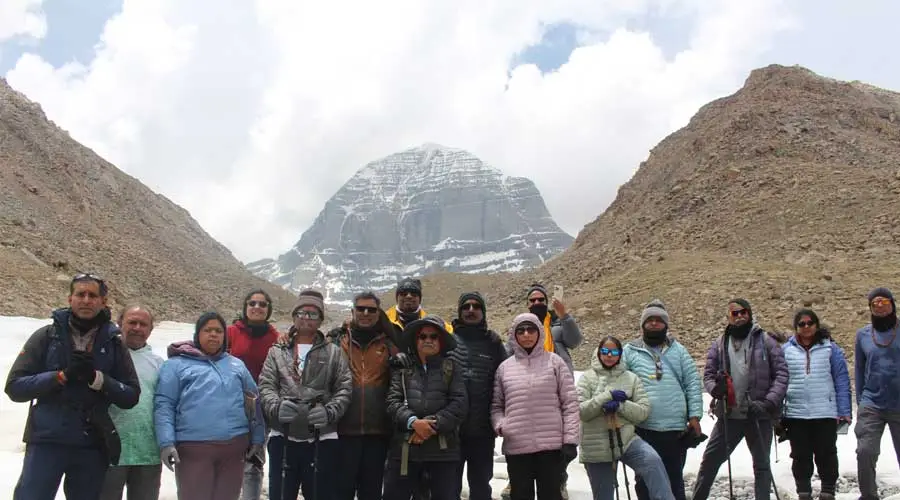
The Mansarovar Lake, which is located in Tibet at the base of Kailash, is also holy. It is said that the water washes away both sin and strife and brings favour and fulfilment here to baptized sojourners.
In Buddhism, Kailash is associated with Mount Meru, regarded as the world axis. This is possible because Tibetan Buddhists circumnavigate the Mt as a sign of reverence known as Kora, which is a form of spiritual bridging.
Kailash Mansarovar is also an attractive site for Jainism and Bon as well. That makes it one of the most occurring affiliations to faith and integration with other religions and cultures.
Universal Pilgrimage for Manasarovar Tour
It is beyond the consideration of religions. Although Kailash Mansarovar is a pilgrimage for Hindus, Buddhists, and Jains, it is a planetarium of spirituality and philosophy.
Ordinary men and women, boys and girls of many professions and occupations, attempt the arduous pilgrimage, their goals being prayers answered and spiritual directions in their lives.
The pilgrimage brings together a group of people worldwide regarding culture and religion as one big fraternity.
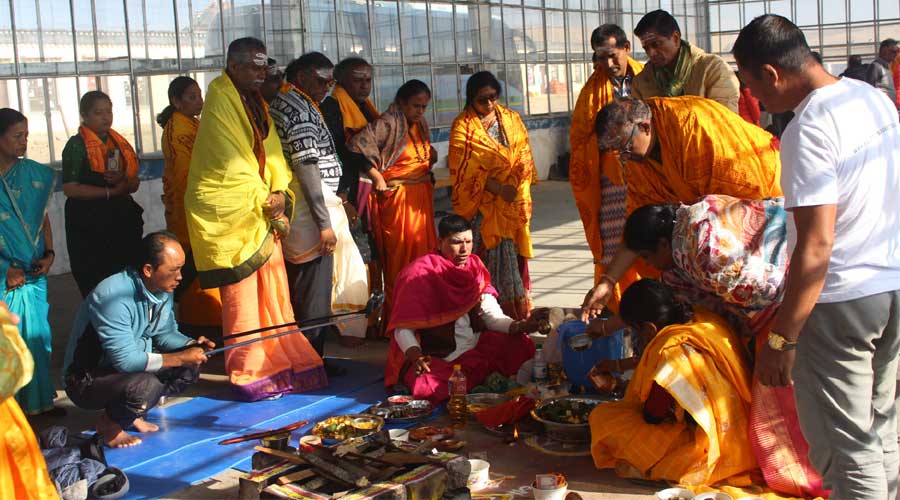
The practices and beliefs of Kailash Mansarovar are like thinking about the homeless seeking meaning and a relationship with life. It is beyond religion; this journey is a chance to seek prayer, meaning, and divinity in the mission.
Historical Background of Kailash Mansarovar
The Kailash Mansarovar is an area steeped in religious and historical lore. According to different religions and cultures, it is mentioned in all sacred literature and has been a Sacred land for several millennia. A similar account of Hinduism has Mount Kailash as the dwelling place of Lord Shiva.
It is also highly significant in Buddhism, where the story of the Buddha’s enlightenment is told. Jainism has been assigned a similar importance as a place of purity.
Kailash, according to the Bon tradition of pre-Buddhist religion of Tibet is considered as a sacred mountain. These two beliefs have turned Kailash Mansarovar into one holy and attractive destination for culture and civilization.
This was done even before bathing at Kailash Mansarovar, a long trek through the hills for many from far and near. This great mountain, with its calm lakes and scenery, attracted many who sought religious redemption or comfort.
More recently, Kailash Mansarovar has also seemed to capture the fancy of adventure seekers and anthropologists alike as they arrived to decipher and seek to understand the significance of culture.
The path of visiting Kailash Mansarovar wasn’t just a trail of physical travel, but it was the voyage that redefined the feelings and belief system of the people who travelled towards the spiritual route.
Kailash Mansarovar Yatra Distance
The total Kailash Mansarovar Yatra distance is about 1000 kilometres. The trip consists of a road from Kathmandu to Tibet with scenic roads and off-roads. From there, you will travel to Lake Mansarovar and then proceed to Darchen, the starting point of the Kailash Parikrama.
The Kailash Mansarovar Yatra Parikrama is a 52-km walk around Mount Kailash that usually takes three days. The distance between Darchen and the Parikrama endpoint and back and the distance between other sites make it challenging yet spiritually fulfilling.
Landmarks during the Kailash Mansarovar Yatra
Kailash Mansarovar is an extra special pilgrimage that involves more than travelling through beautiful landscapes. It holds deep spiritual meaning for those who choose it.
On the way, the pilgrims see many important cultural and religious landmarks, which stand as milestones and remind them of the region’s rich history and traditions.
It is a life-changing experience connecting them to something greater than themselves. Some of the important Landmarks during the Yatra of Kailash Mansarovar are as follows:
Yam Dwar:
The Kailash Mansarovar Yatra begins the moment the pilgrims start their journey through Yam Dwar, considered to be the Gate of the God of Death. Doing this lets them have an indication of crossing from the profane journey to the holy one – from the worldly occupation to the divine one.
Tarboche Flagpole:
Farther along the trail, in the same area, people come to Tarboche if it happens to be with the famous annual happening. To the beat of chants, pilgrims and local residents change a giant flagpole to restore the container of spirituality and the cycle of life.
Dirapuk Monastery:
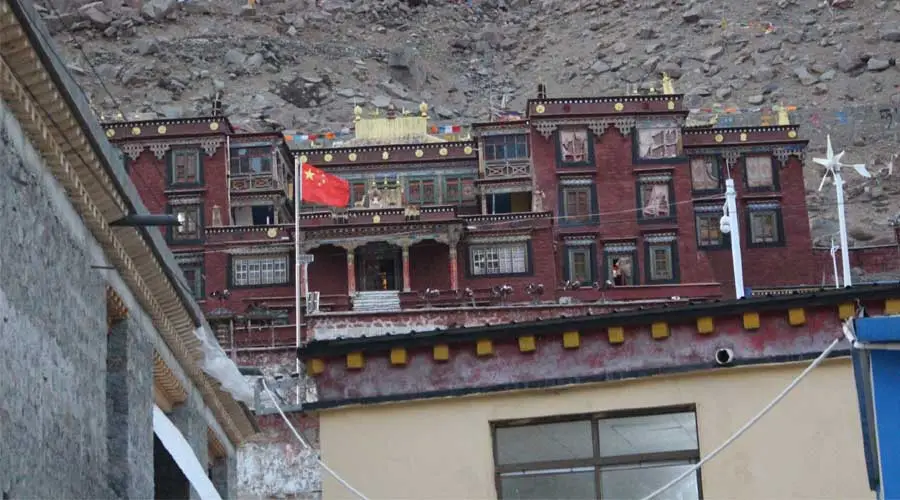
It is the Dirapuk Gompa that warrants prime attraction during the Yatra. This place is utilized by the pilgrims and the locals frequently as they offer prayers and kirtan and can be easily infused with beautiful mountaintop views.
Dolma La Pass:
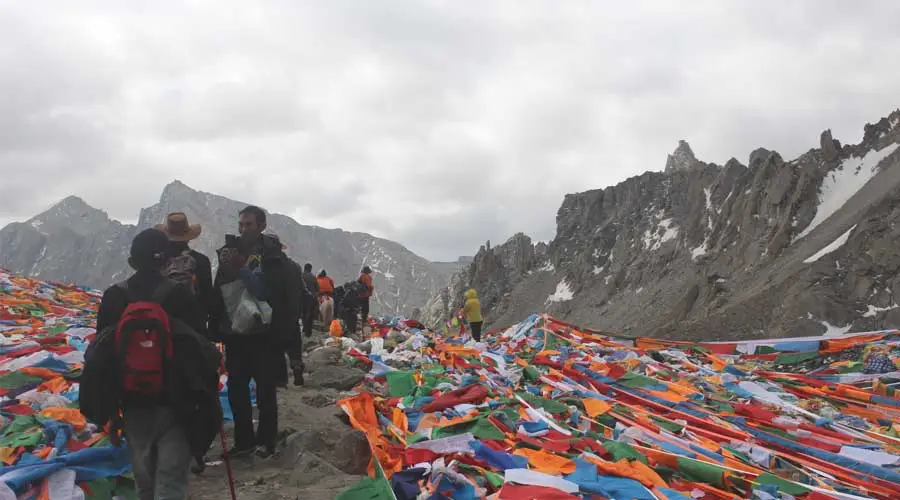
Dolma La Pass is a challenging yet sacred pass at an altitude of 5,650 meters. Pilgrims cross this high mountain pass, and they consider the goddess Dolma the guardian deity of the trek. They pray to her for a safe and trouble-free journey to complete the round.
Gauri Kunda:
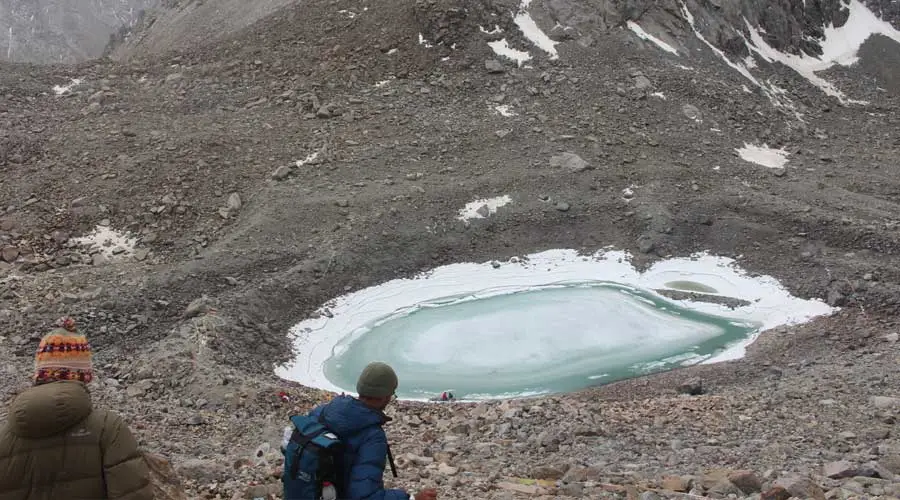
Gauri Kunda is a sanctified water body that comes on the Yatra track, and it is regarded that the goddess Parvati, aka Gauri, used to bathe there. This quiet lake is experienced as a purifying moment by pilgrims, who cannot separate themselves from this lake.
Mansarovar Lake:

Mansarovar Lake is at the base of Mount Kailash and is also a centre and shrine. The banks of this clean-water lake are filled with believers who bathe, offer offerings, and pray. They consider this segment very significant in their cleansing process.
Rakshas Tal:
While Mansarovar is regarded as positive, according to Hindu mythology, Lake Rakshastal is associated with negativity. Here, pilgrims admit the spirituality of this lake and try to keep a distance from it, showing that positive and negative energies coexist in the journey of life.
Zutul Puk Monastery:
Zutul Puk Monastery marks the conclusion of the Kailash Mansarovar Yatra. Pilgrims find solace and spiritual fulfilment in the serene ambience of the monastery.
Best Time For Kailash Pilgrimage Yatra
The best time for Kailash Yatra is from May to September. These months have good weather, making it easy to move from one place to another.
It is hot during the day and a little cold during the evening. There is little rain, and the climate is sunny most of the time. This is crucial for the establishment of easy and wonderful-looking routes in mountainous regions.
Cultural activities such as the pilgrimage to Saga Dawa in May or June give the trip religious importance. Autumn (October to April) is not ideal, especially for winter, because there is too much snow and cold weather.
It is important to always check the weather forecast and get advice from those in the know before going out.
Also, explore the do’s and don’ts of Kailash Mansarovar Yatra.
Kailash Mansarovar Yatra Group Size
The group size limit during the Kailash Mansarovar Yatra plays a huge role. There should be at least 4 people in the group for the Kailash Mansarovar Yatra.
A usual group of 15 to 30 people is the choice of most travel companies. A middle-sized team maintains order, security and personal hygiene on a manageable level.
We have 20 years and more of experience and have discovered that smaller groups can be better engaged in communication and attended to. All pilgrims will be given the right directions, particularly those on high altitude like Dolma La Pass.
Travel within a group helps in bringing people together and spiritual connection. Exchange of prayers, emotions and times of deviation will add value to the experience of everyone.
In previous cases repeated by a few visitors, who would like to have a private or customized trip, Himalayan Trekking and Tours organizes customized private tours to families, friends, or even small religious groups.
Horse Year Significance in Kailash in 2026
The Tibetan and Chinese calendar indicates that the Horse Year 2026. The current year is regarded as one of the sacred years to visit the Mount Kailash.
Mount Kailash is already perceived as the spiritual universe center of Tibetan Buddhism, Bon, Hinduism, and Jainism. Its spiritual power is held to multiply greatly in the Horse Year.
When the Horse Year comes every 12 years, pilgrims come to Kailash to complete the Kora -holy circumambulation of the mountain.
One is believed to accomplish more merits by accomplishing a Kora in Horse Year 2026 than by accomplishing many thousands of Koras. This is a rare spiritual chance to devotees.
The Horse Year is based on the ancient Tibetan astrology. The horse is a symbol of spiritual advancement, speed and energy.
Freedom and power to conquer challenges are associated with it. Kailash is visited during this period to purify the negative karma and earn blessings of many lifetimes.
The pilgrims will come in their masses in 2026 at the remote area in high altitude located in the western region of Tibet. The pilgrimage includes walking over Dolma La Pass and carrying out rituals in religious places such as Lake Manasarovar.
The Horse Year pilgrimage is a cultural, as well as a spiritual pilgrimage. It unites the Tibetan, Hindu, Buddhist, Jain, and Bon followers.
It is believed that the blessings people enjoy this year are greater than the one they have ever experienced.
Kailash Yatra New Route 2025-2026 via Zhamgmu Update
The Rasuwagadhi-Kerung border is the most used route Kailash Yatra has always been conducted by. However, the road was shut down due to floods in 2025 which damaged key infrastructures.
To this, Zhangmu route through Kodari has been reopened to provide a new entry point of pilgrims between Nepal and Tibet.
Nyalam County in Tibet had Zhangmu Port was shut down during the earthquake in 2015 but is now running fully operational. This reopening has provided the devotees with a secure and convenient route of overland to Mount Kailash.
The journey using this route will go through border crossing at Kodari-Zhangmu, through Nyalam, Darchen and the sacred lake Manasarovar.
Kailash Mansarovar Yatra Cost 2026
We provide an all-inclusive package for Kailash Mansarovar Yatra, which costs $2,950 per person for a group of 4 to 8. This package covers all major expenses, including travel, accommodation, meals, permits, and guides, ensuring a hassle-free experience.
The Kailash Mansarovar Yatra package cost includes transportation from Kathmandu to Tibet and back and local transfers to Mount Kailash and Lake Mansarovar. You will stay in pleasant guesthouses and camps. You will also have local food, enough to last the whole trip.
Our experienced guides will be with you every step of the way, ensuring your safety and providing spiritual guidance. The fee also includes necessary permits and medical backup for the trip.
Kailash Yatra package provides a complete and seamless experience, making your spiritual journey to Kailash Mansarovar both affordable and memorable.
Kailash Mansarovar Yatra Permits
As the Kailash yatra goes through Tibet which is controlled by Chinese rule, it is required to obtain the right Kailash Mansarovar Yatra Permits.
The Kailash Yatra Permits guarantee legal entry, easy traveling, and accessibility to holy places along the path.
All pilgrims are required to possess a valid passport that has not expired by the time they travel. As well, tourists require a Chinese visa which tends to be organized by the authorized tour operators specializing in Kailash tours.
Sightseeing without the company of a group or operator is not usually allowed.
The necessary Kailash Mansarovar Yatra Permit involves:
- Tibet Travel Permit (TTP): This is necessary to get access to Tibet and certain areas like Kailash and Manasarovar.
- Military Travel Permit: Necessary since you will travel around the border of China, for security clearance.
- Alien Travel Permit: This is at times needed in restricted places beyond Darchen.
- Chinese Group Visa: Pilgrims who come in groups are given special group permits by the Chinese authorities.
- Travel Insurance: Although it is not a permit, this is highly advisable as it is in high-altitude and remote places.
These are normally aided by authorized operators in all paperwork that includes the submission of passports, visa applications, and special permits. It is also recommended that photocopies of all documents should be carried in case of any emergency.
Tips for Future Kailash Mansarovar Yatra 2026
Here are a few points giving tips for future pilgrims who plan the Kailash Mansarovar Yatra:
1. Obtain the necessary Permits and Documentation
2. Physical and Mental Preparation
3. Pack Wisely
4. Acclimatization and Altitude
5. Weather-Appropriate Clothing
6. Respect Local Customs and Traditions
7. Stay Hydrated and Maintain Nutrition
8. Connect with Fellow Pilgrims
9. Responsible Tourism Practices
10. Seek Guidance from Experienced Guides
Kailash Mansarovar Yatra Departure Dates for 2026 with Full Moon
| Arrival Date | Tour Start Date | Tour Finish Date | Remarks |
| 21 May 2026 | 26 May 2026 | 31 May 2026 | Full Moon |
| 20 June 2026 | 24 June 2026 | 29 June 2026 | Full Moon |
| 20 July 2026 | 24 July 2026 | 29 July 2026 | Full Moon |
| 18 August 2026 | 23 August 2026 | 28 August 2026 | Full Moon |
| 16 September 2026 | 21 September 2026 | 26 September 2026 | Full Moon |
The above dates are only for the full Moon experience from Dirapuk. If the date mentioned does not suit your leave and travel plans, you can travel to other dates in the above months.
Please remember that you must arrive in Kathmandu on Monday or Tuesday Morning to apply for a Chinese group visa. The visa processing takes four working days (Monday through Friday).

